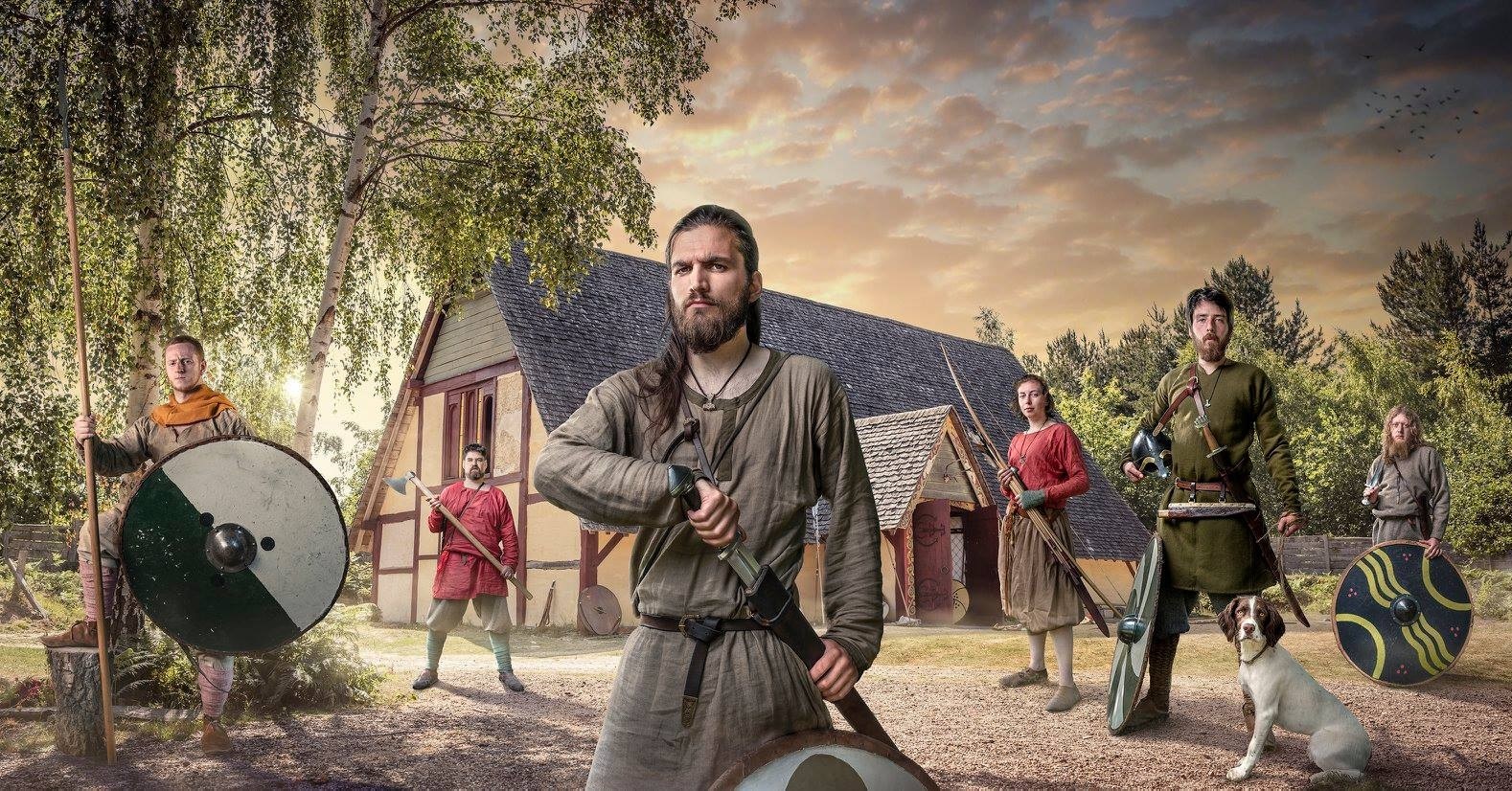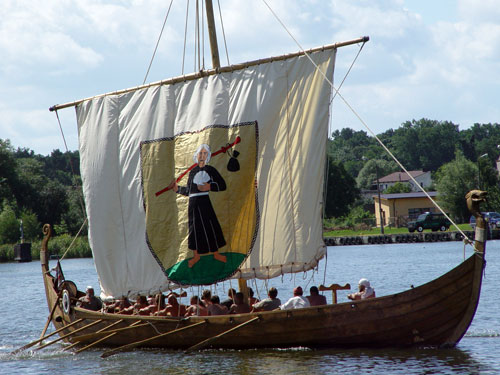Hello all:
For the past year or so, I've been doing some light research on the ancient Norse traditions of lapstrake boat construction (clinker). For those of you who are unfamiliar with some of the boat building traditions, the Norse tradition of lapstrake construction was mostly displaced by Carvel planking once cannons started appearing on the "gun-wall" of the ship. The rigidity was needed to keep the percussion of the cannon fire from ripping the boat apart.

The picture here is not exactly accurate for more traditional ancient longboat construction. This picture essentially shows a lapstrake construction on heavy frames. However the Vikings added the frames AFTER the planks were built and the frames were not nearly has heavy and they did not cover every plank. The overlapping "strakes" are essentially stringers and are what gave the longboat its strength (and flexibility). I've obviously never sailed in a Viking boat but I've read that they hulls flex a lot and the boat slides over the waves instead of punching through them. In fact, before the bronze age, the planks were sewn together.
In my readings on the use of this building technology, I am struck by the relative ease of construction the traditional lapstrake approach provide. There was no lofting required and the shape of the boat was created by how the planks were "clinked" together. The Viking longboat was fast, light, easy to build and had a large carrying capacity. It just didn't sail to windward very well.
I 'm surprised we don't see the longboat being upgraded with more modern technology. It seems you could keep what is good about the longboat design and improve its windward abilities considerably.
For instance when I see a boat like this...


I can't help but think that if you moved the mast forward just a bit, and rigged the boat as a cutter gaff (maybe add a shoal keel, dagger board or stub) you would create a very efficient design that would sail to windward much better while keeping much of what is desirable about the longboat. The gaff rig should keep the heeling moment low and still allow for the shorter mast.
PLUS!!! How cool would it be to show up at the marina with a dragon's head on your prow







refs:


 en.wikipedia.org
en.wikipedia.org
 www.britannica.com
www.britannica.com
For the past year or so, I've been doing some light research on the ancient Norse traditions of lapstrake boat construction (clinker). For those of you who are unfamiliar with some of the boat building traditions, the Norse tradition of lapstrake construction was mostly displaced by Carvel planking once cannons started appearing on the "gun-wall" of the ship. The rigidity was needed to keep the percussion of the cannon fire from ripping the boat apart.
The picture here is not exactly accurate for more traditional ancient longboat construction. This picture essentially shows a lapstrake construction on heavy frames. However the Vikings added the frames AFTER the planks were built and the frames were not nearly has heavy and they did not cover every plank. The overlapping "strakes" are essentially stringers and are what gave the longboat its strength (and flexibility). I've obviously never sailed in a Viking boat but I've read that they hulls flex a lot and the boat slides over the waves instead of punching through them. In fact, before the bronze age, the planks were sewn together.
In my readings on the use of this building technology, I am struck by the relative ease of construction the traditional lapstrake approach provide. There was no lofting required and the shape of the boat was created by how the planks were "clinked" together. The Viking longboat was fast, light, easy to build and had a large carrying capacity. It just didn't sail to windward very well.
I 'm surprised we don't see the longboat being upgraded with more modern technology. It seems you could keep what is good about the longboat design and improve its windward abilities considerably.
For instance when I see a boat like this...
I can't help but think that if you moved the mast forward just a bit, and rigged the boat as a cutter gaff (maybe add a shoal keel, dagger board or stub) you would create a very efficient design that would sail to windward much better while keeping much of what is desirable about the longboat. The gaff rig should keep the heeling moment low and still allow for the shorter mast.
PLUS!!! How cool would it be to show up at the marina with a dragon's head on your prow
refs:


Viking ships - Wikipedia
 en.wikipedia.org
en.wikipedia.org
Longship | Definition, History, & Facts | Britannica
Longship, type of sail-and-oar vessel that predominated in northern European waters for more than 1,500 years and played an important role in history.
Engineering the Viking Longboat
The Viking longboat is a true engineering marvel of the ancient world, and in fact, these boats are a marvel to this very day, over a millennium later.
www.asme.org




